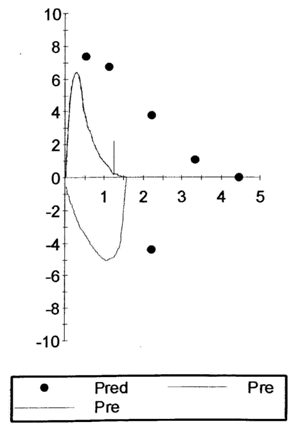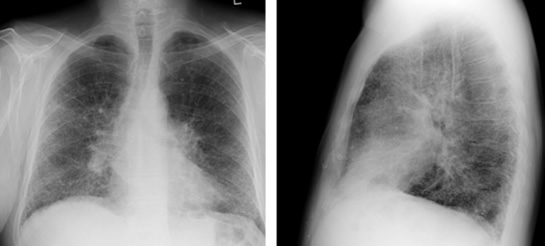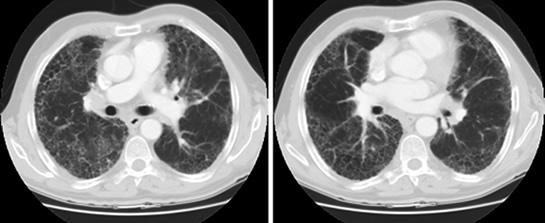
Pulmonary Function Testing
Case 7 Answer
A 73 year-old man presents with progressive dyspnea on exertion over the past one year. He reports a dry cough but no wheezes, sputum production, fevers or hemoptysis. He is a life-long non-smoker and worked as a lawyer until retiring 3 years ago. He likes to hunt and fish in his leisure time.
His pulmonary function testing is as follows:
| Pre-Bronchodilator (BD) | |||
|---|---|---|---|
| Test | Actual | Predicted | % Predicted |
| FVC (L) | 1.57 | 4.46 | 35 |
| FEV1 (L) | 1.28 | 3.39 | 38 |
| FEV1/FVC (%) | 82 | 76 | |
| FRC | 1.73 | 3.80 | 45 |
| RV (L) | 1.12 | 2.59 | 43 |
| TLC (L) | 2.70 | 6.45 | 42 |
| RV/TLC (%) | 41 | 42 | |
| DLCO* corr | 5.06 | 31.64 | 16 |
His flow volume loops is as follows:

Case 7 Interpretation
This patient has a reduced FEV1 and FVC with a preserved FEV1/FVC ratio. The total lung capacity is reduced and the patient, therefore, has a restrictive defect. The flow-volume loop also has the characteristic appearance of a restrictive process – tall, narrow and a short expiratory phase. Based on the fact that his TLC is below 50% predicted, this would be classified as a “severe” restrictive defect. His DLCO is also markedly reduced indicating he has a reduced alveolar-capillary interface for gas exchange and suggesting that the cause of his restrictive process lies within the lung parenchyma.
This patient was subsequent found to have idiopathic pulmonary fibrosis. His chest x-ray and CT images are shown below.
PA and Lateral Chest X-Ray

Chest CT Images

UW School of Medicine : School of Medicine Mission
Copyright and Disclaimer : Credits and Acknowledgements